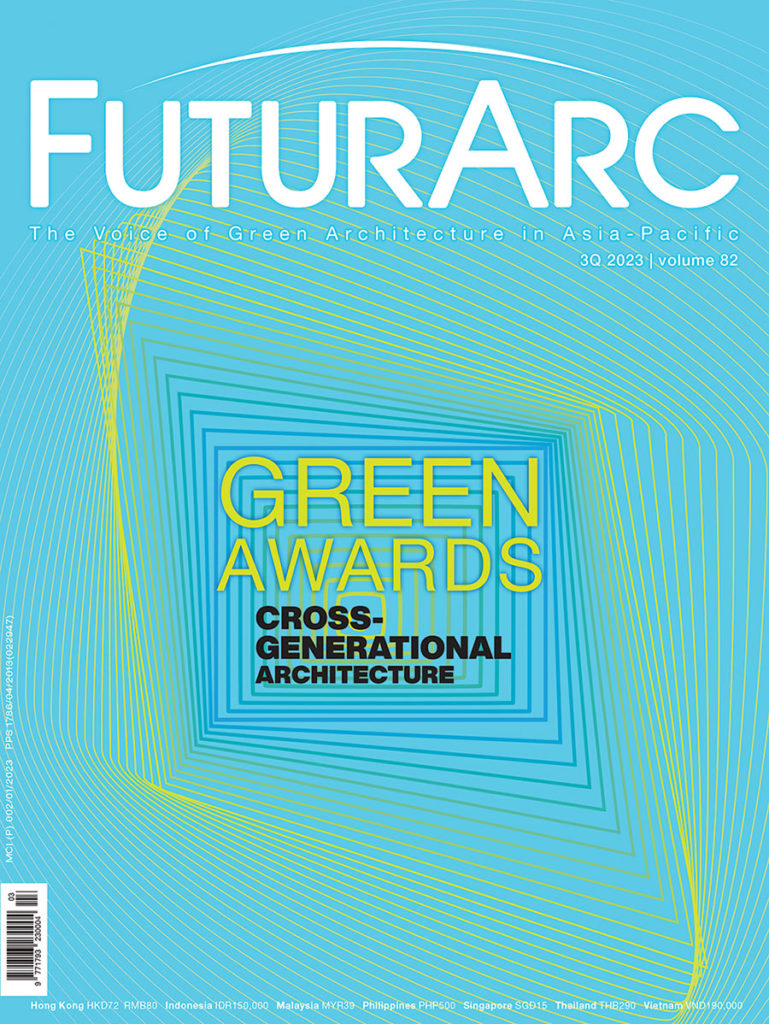Green Awards: Cross-Generational Architecture
Dear FuturArc readers,
This edition is dedicated to the awarded submissions of FuturArc Prize (FAP) 2023 that presented sustainable ideas for a future that underscores cross-generational architecture, and in the same vein, it also explores other related stories of inclusive design.
What constitutes inclusive design or designing for all?
The answer is at once complex yet simple. It is simple when one considers who the space is for and what it is used for, i.e., when architects/designers ask the right users what they need or understand from the ground what needs to be accommodated or required. It becomes complex when assumptions are made, both on who the basic user is and how the space is to be used. However, simplicity is the hardest to achieve. Simply because human intelligence has become increasingly specialised.
Both sentiments are echoed by Dr Emi Kiyota (The FuturArc Interview with Alakesh Dutta) who made an observation that when it comes to designing specialised spaces such as a hospital, the first steps of asking for advice and talking to the right users are, although deemed essential, not done enough.
“For me, it’s okay if an architect admits this is a kind of place s/he has never learnt how it’s operated and reaches out to people who run such places and seeks their advice. This is okay as it’s not their profession. A lot of things are specialised these days, and one can’t be a specialist for everything and get everything right on their own. Instead, I feel the communication should be better between architects and the people who run and manage such spaces.”
Designing for all infers designing for all ages (Commentary: Design for Aging). Lekker Architects shared key insights on this as well as exemplary case studies and projects. This topic has personally highlighted an interesting observation of the human psyche: almost everyone wants to live longer, yet not all truly acknowledge the inevitable process of growing and living older. What does it mean to grow old and how does it affect the spaces in which one lives, works or plays? What does it mean for architects/designers who are of a younger age group to design for older users? Dr Emi also pointed this out: the architects/designers who design, say housing for seniors, should not assume users’ needs from reading literature or designing other housing typology, but to base their designs on asking the older persons because the architects/designers have never been old before.
Nipun Prabhakar wrote admirably about designing spaces for non-human species (Commentary: Designing for Non-humans as an Act of Service). He has captured remarkable images of birdhouses that have been published in The New York Times; since then, his interest grew and a story that included other animals was born in the following pages—we hope you will find his story as hopeful and uplifting as we did.
Here is yet another interesting observation to be made of the human psyche: it is a fact that all species are interdependent, and a fact that humans cannot survive without the ecosystems of other species. Yet, the way we have been ‘developing as usual’ seems to assume otherwise. Like growing old, we desire longevity, yet most of us are in denial of the process of aging, thus, this mindset is reflected in the way spaces are designed. Similarly, we want to develop like there is an endless well of resources that makes this planet, so although this is not true, we still bulldoze ahead like it is.
How can architecture help enable humanity to accept and be in alignment with the way things are?
Table of Contents
1Q 2024: HEALTH/WELLNESS
Previous issues:
⠀
4Q 2023: YEAR-END ISSUE | WATER
⠀
3Q 2023: GREEN AWARDS | CROSS-GENERATIONAL ARCHITECTURE
⠀
2Q 2023: OLD IS GOLD
⠀
1Q 2023: MOBILITY & TRANSPORT
⠀
4Q 2022: YEAR-END ISSUE | POLICY VS PRACTICALITY, PRACTICE VS PRINCIPLES, PROGRESS VS PLANET
3Q 2022: GREEN AWARDS | REINTERPRETATION
2Q 2022: NEW & RE-EMERGING ARCHITECTURE
1Q 2022: HOUSING ASIA
To read the complete article, get your hardcopy at our online shop/newsstands/major bookstores; subscribe to FuturArc or download the FuturArc App to read the issues!



